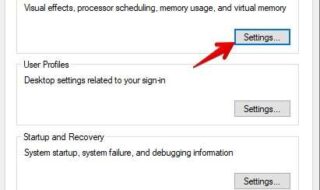There’s no magic formula for perfecting business intelligence. But it’s also no secret data is becoming increasingly important to businesses that want to compete in the modern economy. About 90 percent of large corporations are adding a Chief Data Officer (CDO) to their executive suites. Clearly, enterprises see the value in data.
These are some ideas for optimizing your business intelligence platform.
Contents
Don’t Just Repurpose Old Models

Oftentimes, organizations adopt new BI tools and just want to go right back to doing the exact same things they were before. The idea behind analytics is to push the envelope of understanding, not just look at the same things ad nauseum.
Boosting efficiency is about trying new things. Think about the capabilities of your BI tools, and how those can be pushed to yield better results. Consider organizational motivations too. What are the real problems you need to solve to take your business efficiency to the next level? Approaching BI with a problem-facing perspective can help organizations make the most of it.
Make Sure Your Hardware Can Handle the Load
You’re going to run into problems if you come up with a grand BI plan, but don’t have the right hardware for the job. Business intelligence tools are all going to have different hardware requirements in order to make them run at their optimal levels. This is another reason to consider the benefits of choosing a cloud-based BI platform.
According to a business intelligence survey, the lack of hardware and infrastructure costs was the top reason responding companies wanted to use cloud-based tools. Furthermore, scalability was seen as the second-most important reason—something that is much easier with cloud products because hardware isn’t a concern.
Shop Around for the Right BI Platform
There are tons of BI platforms and products out there today. Don’t assume your organization needs to settle for anything. The first platform you look at might not necessarily be the right fit. Shopping around will allow you to get a better idea of what’s out there, and possibly change your views about how to approach analytics within your organization.
Artificial intelligence is one of the biggest trends in the world of BI tools right now. ThoughtSpot is one BI platform leveraging AI in a unique way. Their search analytics tool utilizes natural language processing and AI to make working with data more like posing a question to a search engine. This makes getting answers seamless, as more employees are able to effectively use data analytics.
Ask Your Vendors for Advice
When it comes to understanding and deploying BI tools, there’s no such thing as too much communication. In fact, the more you can glean from other sources, the better you’re going to be able to take those ideas and turn them into something that will work for our own organization. Talking to the people who are most familiar with your BI platform is a great place to start this process.
Of course, you’re going to get some basic trainings and walkthroughs when you start working with a new BI provider. Too many organizations, however, don’t keep following up after the initial setup is done. Stay in touch with your BI provider so you can ask questions as you have them. When you have a working relationship, they might also be able to give you some novel ideas for how you can use your BI tools most effectively.
Train and Retrain Employees
You’re only going to extract value from analytics if you have people who understand both the tools and how to interpret reports. It’s essential to give employees the opportunity to learn by training them on new analytics protocols.
For starters, you want employees working with data to be able to use the tools the right way, and make informed choices without having to ask about everything. It’s also essential to have accurate analytics. Training people is the best way to ensure they’re doing things correctly.
There are many elements at play when working with BI and analytics tools. Take the time to get these priorities in line so your team can use its BI platforms more effectively.



